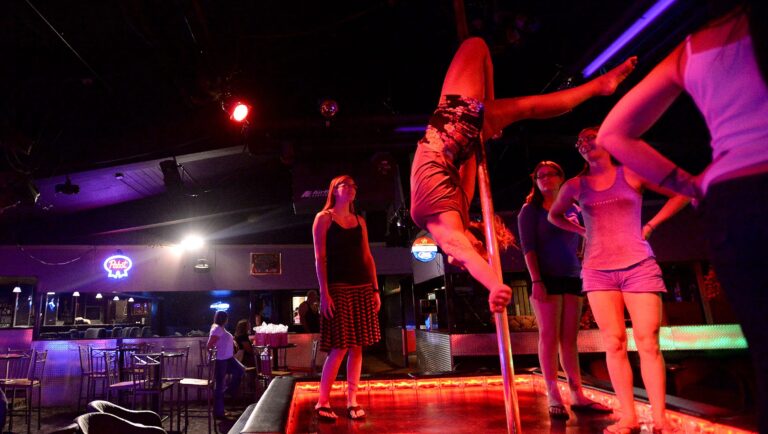Table of Contents
Strip clubs have long been considered controversial, sparking debates and dialogues on their place in society. With the growing presence of these establishments in communities around the world, it is important to understand how the public responds to them.
This article seeks to explore community responses to strip clubs and examines the various debates and dialogues that are taking place on this issue. Through an examination of existing research, we will uncover why some people oppose or support strip clubs and what implications they may have for our society as a whole.
We also aim to illustrate how perspectives change depending on one’s social background or location. Finally, this paper hopes to provide insights into how different stakeholders can work together toward greater understanding and acceptance of strip clubs in our societies today.
Stripping and Society: Examining the Cultural Impact of Strip Clubs
Strip clubs are a source of ongoing debates and dialogues about their place in society. In recent years, the issue has grown to encompass more than just the potential for negative externalities–it now includes questions about its impact on cultural norms.
Stripping and Society: Examining the Cultural Impact of Strip Clubs seeks to explore this topic further, delving into how strip clubs shape public opinion on gender roles, body image, sexuality, and other societal issues. Through interviews with club owners, dancers, patrons, activists, and critics alike, this article will provide an overview of perspectives from both sides of the debate.
It will also assess current regulations around strip clubs in different countries and cities as well as examine trends in public attitudes towards them over time. The article will ultimately seek to foster greater understanding between those who view strip clubs positively or negatively so that meaningful dialogue can occur across communities all over the world.
Community Perspectives on Strip Club Regulations

As communities across the United States grapple with how to regulate strip clubs, it is clear that there are a range of perspectives at play. Some argue for complete bans on such establishments, while others take a more nuanced approach by focusing on ways to ensure dancers and other workers are treated humanely and fairly compensated.
Still, others believe strip clubs can be beneficial to their local economy in terms of job creation and tax revenue. It is important to consider all these perspectives when engaging in dialogues about regulations surrounding strip clubs.
Ultimately, it will be up to each community as to what regulations they deem appropriate for their unique needs and values.
Understanding Community Attitudes Toward Gender Equality about Strip Clubs
When it comes to understanding community attitudes toward gender equality in strip clubs, the debates and dialogues are often complex. Many people view strip clubs as venues that perpetuate sexism and inequality, while others believe they can be places of empowerment for women.
The ongoing discourse surrounding this issue is far from settled. On one side, some argue that because strippers are predominantly female performers, the presence of a strip club reinforces traditional gender roles and contributes to an atmosphere where women’s bodies become objects of male pleasure or entertainment.
This could potentially lead to further marginalization of women within society by reinforcing stereotypes about their role in relationships with men. In contrast, other individuals point out that many strippers feel empowered by performing at a club since they have the opportunity to make money on their terms without being judged for their body type or clothing choices.
Herein lies an interesting paradox: even though some may see stripping as degrading or exploitative toward women, many dancers find power in reclaiming control over how they present themselves sexually in public spaces. The question remains: how do we reconcile these two views? How can we create dialogue around this contentious issue so all sides can be heard? Ultimately, more research is needed into community attitudes regarding gender equality and strip clubs before any definitive conclusions can be drawn on either side of the debate.
Assessing Neighborhood Quality-of-Life Issues Related to Proximity to a Strip Club

Assessing neighborhood quality-of-life issues related to proximity to a strip club is an important and complex topic. Neighborhoods often experience drastically different impacts from the presence of a strip club in their midst.
On one hand, local businesses may benefit from increased foot traffic while on the other, residents may be concerned about public safety or property values. Communities need to engage in thoughtful debates and dialogues when considering how best to address potential issues that arise with a nearby strip club.
Local governments have an important role to play by setting clear guidelines for any establishments operating within their jurisdiction. Elements such as noise levels, dress code requirements, security measures, and age restrictions should all be taken into account before granting permission for such clubs to open in residential areas.
Furthermore, surrounding neighborhoods must be given adequate input during this process so that they can voice their concerns and ensure these regulations will protect them adequately from any negative effects associated with having a strip club nearby. It is also important for policymakers at all levels of government to take into consideration the wider implications of allowing these types of establishments within their boundaries; not only must they be mindful of protecting citizens’ rights but also consider how societal attitudes toward sex work might shape community responses towards its presence in residential areas.
Allowing space for critical discourse around this issue could help foster greater understanding between stakeholders involved which would ultimately lead to more productive conversations regarding the place of such venues in society as well as assess neighborhood quality-of-life issues related thereto
Conclusion
The Phoenix strip club debate has been ongoing for years, with many community members feeling strongly about whether or not it should be allowed to operate in the city. While some argue that the club brings economic benefits to the area and provides entertainment for adults over the age of 21, others feel that it is damaging to society by promoting the objectification of women and encouraging a culture of violence and crime.
The debate continues between these two sides, but there is no clear resolution in sight as both sides continue to voice their opinions on this controversial topic. Ultimately, only time will tell how this battle plays out within the Phoenix community and what its ultimate impact will be on wider society as a whole.

